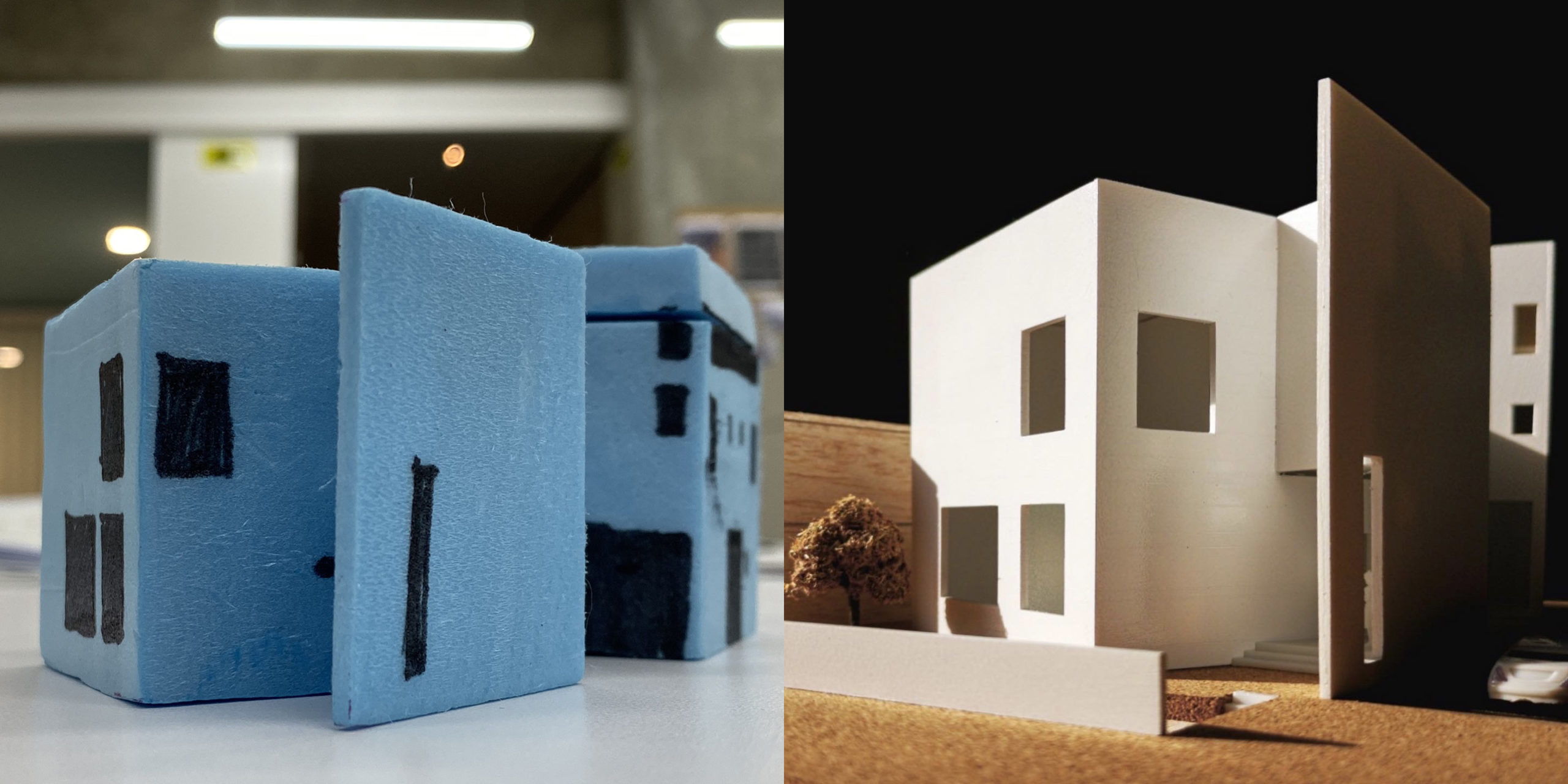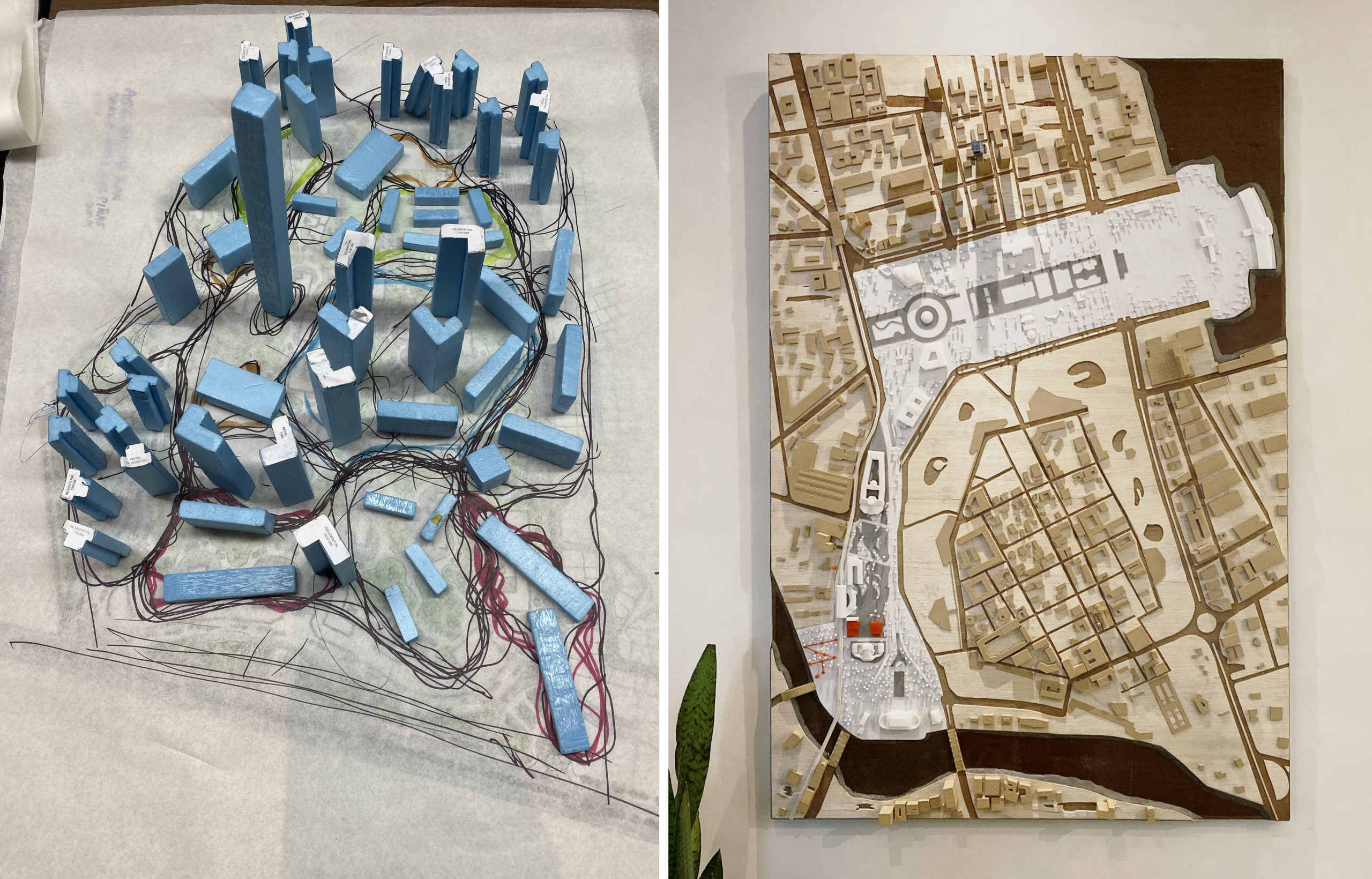Architectural models or maquettes are visions of tiny little worlds. Sometimes, they represent the purest form of our architectural journeys.
I’ve always had a strong affinity for models, from Lego blocks, action figure set pieces to movie environments and dioramas. There is a certain charm to being able to physically observe and interact with your thoughts, and seeing a story unfold.
We have seen physical models become less and less popular with the advent of increasingly advanced computer modelling software and tools. I remember having a discussion with one of my colleagues about the use of physical models in contemporary practices outside of presentation and marketing, and so I figured why not explore these thoughts further and try to show how we work with models in our studio.
First, it is important to note that there are different kinds of architectural models. The ones people probably see most often are the marketing models that are highly accurate scale reproductions of various buildings and developments. Then there are the presentation models that convey architectural ideas and massing or sketch models that form part of the design process.
Formation
What purpose do physical models serve? What can you do with one that you cannot do with a virtual model?
Massing models are incredible idea generators. They are tools for both contemplation and collaboration. There are very few tools that allow each member of a team to have simultaneous and diverse views and experiences of a form or space. They are almost cubist abstractions of an idea or form. These models act as collaborative platforms to discuss and explore ideas. They give a better sense of scale and geometry and show the physical relationship of a project with its site and surroundings.
A model is a medium that we can hold and touch, as well as manipulate with our hands. You can bring them up close or hover over them, allowing you to have simultaneously broad and particular viewpoints. Changes and articulations are immediate and particularly apparent in them. Massing models are often made with foam and cardboard or other ad hoc materials. They are unfinished and unpolished giving a very malleable and indeterminate yet physical sense of exploration.
Expression
If you’ve ever been in a presentation meeting with a physical model at the center, you will quickly realize that the models often capture most of the attention. The best renderings and drawings pale in comparison as tools for communication. Physical models have been ingrained in us from childhood memories and our collective cultural experience. There have been physical models for almost as long as there have been cities and every child will grow up playing with various representations of the world around them. We simply understand and relate with models.
In 2019, we were lucky enough to take a peek at the Neri and Hu models when we visited their offices in Shanghai, as well as visit one of the few architectural model museums in the world at the Fengyushu Shanghai headquarters. The amount of attention and care paid into crafting these maquettes turn them into works of art separate and distinct from the art of architecture itself.
These models show how creative thoughts and ideas cannot only be shared, but also preserved and documented. They are pieces of architecture that expresses that brief moment before marketing and practical realities come in.
We first got into the world of 3D printing with a Makerbot in 2013. Since then, we’ve begun to fit out a model workshop in our office with another printer and more model-making tools. A presentation model works best when it is accurate and precise in scale as well as character.
Wood, clear and metallic filaments have begun to allow us to better express our ideas. Better modeling software has not moved us away from our models, but actually empowers us to make them better.
Marketing Models
Marketing models are invaluable tools of the real estate industry. They range from urban plans to architectural interior design scale models and one-is-to-one mockups of rooms and flats. They showcase material and finish as well as provide important information for the end user. They are decision making tools that can allow one to see and feel something that is usually years away from completion. These models are increasingly becoming more interactive as projection technology and miniaturization have allowed us to input movement and create augmented realities.
Architectural scale models are toys. Toys allow us to play with our ideas. They encourage curious and playful explorations that are needed in the development of new ideas for our built environment.
I, for one, believe that every piece of architecture needs a model as much as every child should have a Lego set. Architects should never stop playing.



